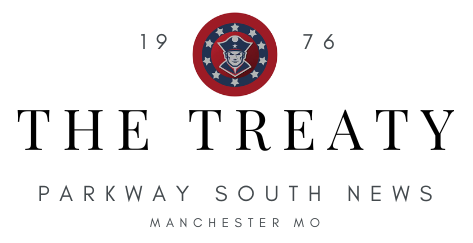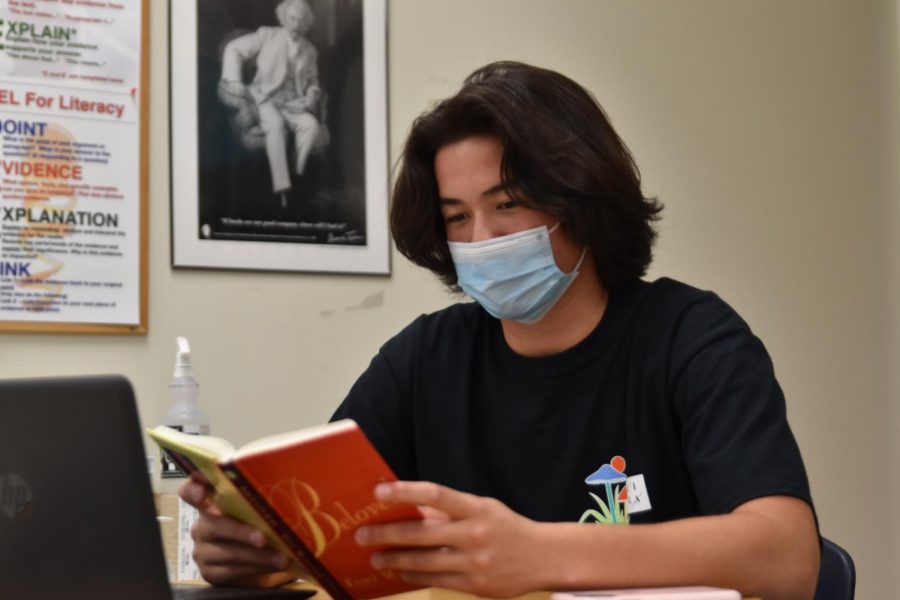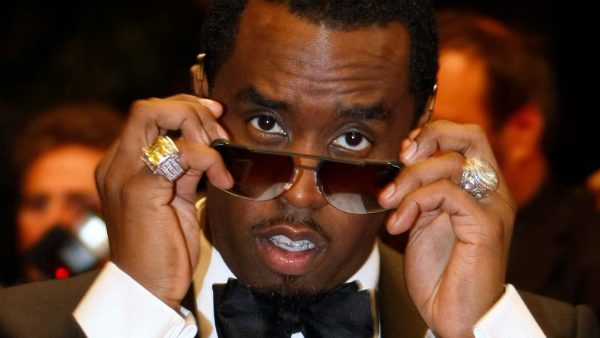Out with the old, in with the new
English classes need to incorporate more modern titles
Junior Kyle Brown reads Beloved, by Toni Morrison, in Mr. Timmons’ English 3 class.
Books.
Sometimes they might just look like clusters of paper scribbled with tiny black words, but those words can also be powerful once you dive into the stories they hold and the messages interwoven inside of them.
However, it’s important that these messages stay relevant to the world around us and that the story overall is interesting and understandable to the reader, something which our very own English classes fail to do. Too many English teachers have us read books that are 100 or more years old and expect us to understand them when we are actually falling half asleep while reading them. If these books related to our lives and the issues currently going on in our society, I bet you that more kids would be more excited about going to English class. Books like To Kill a Mockingbird, Macbeth and The Great Gatsby are some of the most commonly read books in English class, but they could easily be replaced with more modern books such as The Hate U Give, All The Light We Cannot See, and The Miseducation of Cameron Post.
Let’s start off with freshman year. One of the first books a lot of freshmen read when you walk into English 1 that first year of high school is To Kill a Mockingbird, by Harper Lee, written in 1960. Lee’s book takes place in a small town in Alabama during the mid-30s, and follows the life of 8-year-old Scout Finch and her father, Atticus, who is to defend in court a black man who allegedly raped a white woman. While exploring the concept of racial injustice, Mockingbird is also an outdated book that many find boring and monotone. It’s hard to relate because it was written so long ago and there are just not any modern themes that young readers would find interesting. On the other hand, The Hate U Give by Angie Thomas was published in 2017 and also tackles race in a more modern way that students of color might be able to relate to easier. It tells the story of 16-year-old Starr Carter who, while being raised in the African-American community of Garden Heights, attends a mostly white school in the suburbs. The story takes a turn when one of her childhood best friends, Khalil Harris, gets murdered at the hands of a cop when he was unarmed, with Starr in the passenger seat as the only witness. Not only does this book explore police brutality and Black Lives Matter, which has been big the last few years, but it also incorporates modern concepts of African American culture. To Kill a Mockingbird was written in the 50s by a white author, but The Hate U Give was written by a black author and is mostly written in the dialect African-American Vernacular English which can be more accessible to modern students. Some students might also relate to the community in The Hate U Give more than in How to Kill a Mockingbird and might have faced some of the injustices in the book firsthand. The Hate U Give tackles issues that are happening in the now, and students should be exposed to books like that because they are practically living in these issues. On the other hand, The Hate U Give is taught in English 4 to seniors, but not every senior takes English 4. Some take AP Literature or College Composition, so they never get to read the Hate U Give. It should either be a required book for seniors or taught to lowerclassmen as well. However, How to Kill a Mockingbird is a classic and praised by many, and could be beneficial to students so they learn about civil rights and racial injustice in the past. But classics shouldn’t be constantly swamping English classrooms while modern books are being pushed aside. The two should be intermixed so students can get a feel of both, and The Hate U Give is a great book to introduce into that mix.
Another classic that many Parkway English teachers incorporate into their curriculum is Macbeth, by William Shakespeare. Macbeth is a story about tyranny and a dangerous hunger for power, intertwined with murder and witchcraft. But it was also written in 1606 and was written as a play, not a story to just easily be read. In my Honors English 2 class, we did get to watch little clips from movies to be able to follow the story easier. Nevertheless, the language is still hard to understand, which makes it more difficult to do projects and essays about the book. And we’re also supposed to be reading a book, not watching movies about one. What’s the point of reading Shakespeare if the language is too hard to even understand? How are we supposed to annotate and dive deeper into it when we can’t even grasp the basic text? Maybe reading Shakespeare once during our high school career would be okay, but we also read Romeo and Juliet during my freshman year, which was also a struggle. What’s the point of making us understand Shakespearean English in 2021? Again, there are plenty of modern books that are easier to understand while also tackling more relevant topics. The Miseducation of Cameron Post by Emily M. Danforth was written in 2012 and follows the story of a lesbian girl in Montana as her parents die in a car crash when she was 12 and she’s left being raised by her hyper-religious Aunt. Even if it doesn’t follow a super similar storyline to Macbeth, it still brings out the corruption of religion and how that power can abuse people. Danforth also writes the book with very vivid description, making it feel as if the reader is living along with the main character, Cameron, and pulls you right into the story with thought-out language and dialogue. This makes it even easier to understand and grasp the journey of the character and what she’s going through and helps students become more understanding towards LGBTQ+ people. Adding on, Macbeth and several other classics are filled with rich, straight white men, and don’t have much diversity. The way they talk about other groups is in a way of contempt and ignorance with very little understanding, making it harder for students to be open-minded and see through different perspectives. Modern books take the risk of diversity and tackle perspectives from different races, sexualities, and genders that are relevant to our current society. We should be learning about the now, not just the past.
The third book, and what many see as the most boring book they’ve ever read in high school, is the Great Gatsby by F. Scott Fitzgerald. The Great Gatsby is a book that explores the corruption of the Long Island upper class and the peak of the Roaring 20s, following the wealthy Jay Gatsby and his infatuation for Daisy Buchanan. I will honor the fact that the Great Gatsby does dive deep into how ignorant and arrogant the one percent can be, but it does so in a boring, confusing way that seems to ramble on and on without any substance. It’s filled with description that doesn’t help the book but only makes it hard to read, and it dulls down the suspenseful and exciting parts of the book, dragging them on and on. Also, with being written in 1925, the words and language also prove difficult to understand and just add to the challenge. You’ll read a chapter and find yourself unable to process anything that happened because it makes no sense at all. On the other hand, an excessive amount of description is sometimes done right, especially in the book All The Light We Cannot See by Anthony Doerr. It tells the story of two kids in the midst of World War II, one of them being a young German boy named Werner Pfennig who joins the Nazi Party to avoid being sent off to a coal mine, and the other a French girl named Marie-Laure LeBlanc who went blind as a child. Doerr litters the book with description but does so in an enticing way that makes you never want to put the book down. It also dives deep into the different perspectives of WWII but doesn’t dull down on the terror, highlighting not just the ongoing battle but the corruption of the Nazis and their mistreatment of even their own people. It also explores brief but heartwarming love and pulls at your heartstrings multiple times throughout the pages, proving entirely opposite to boring. And again, the characters are young, making the book more relatable to teen readers way more than Gatsby who is filled with adults who talk about almost nothing the whole entire book. English class is supposed to encourage kids to read, not to push them away from it with boring books that they can barely get through. By giving them books that explore important but interesting topics they’re more likely to actually finish the reading assignment than looking it up on Sparknotes.
Teachers and adults who push the classics have their reasons. Reading classic literature can help students learn the evolution of language and learn how sentence structures have changed so that students can help incorporate different types of English into their own writing. Also, as students grow up they’re going to hear and be exposed to allusions to classic literature. While classics have their benefits, it’s important to recognize the good qualities of modern literature as well and realize that incorporating both classics and modern reading into the English classroom can help students get the best of both worlds.
All in all, reading is one of the best things you could do for your brain, helping to stretch your imagination and intelligence. So, whether you choose to pick up a Charles Dickens novel or a J.K. Rowling, be sure to immerse yourself in that private little world because it can do wondrous things for you.







